As you may know, in boating business September is the busiest month of all: Starting with Cannes Yachting Festival we have a lot of boat shows like Genoa, Southampton or Barcelona to attend. As a German dealer, it´s the Lake Constance boat show “Interboot” which starts right after Cannes. So, here I am again, 10 days of trade fair alarm, a big Beneteau-stand and lots of traffic. Nevertheless, before and after a busy boat show day I always find some minutes to look around. Happy us: Directly behind our Beneteau-stand I found something interesting …
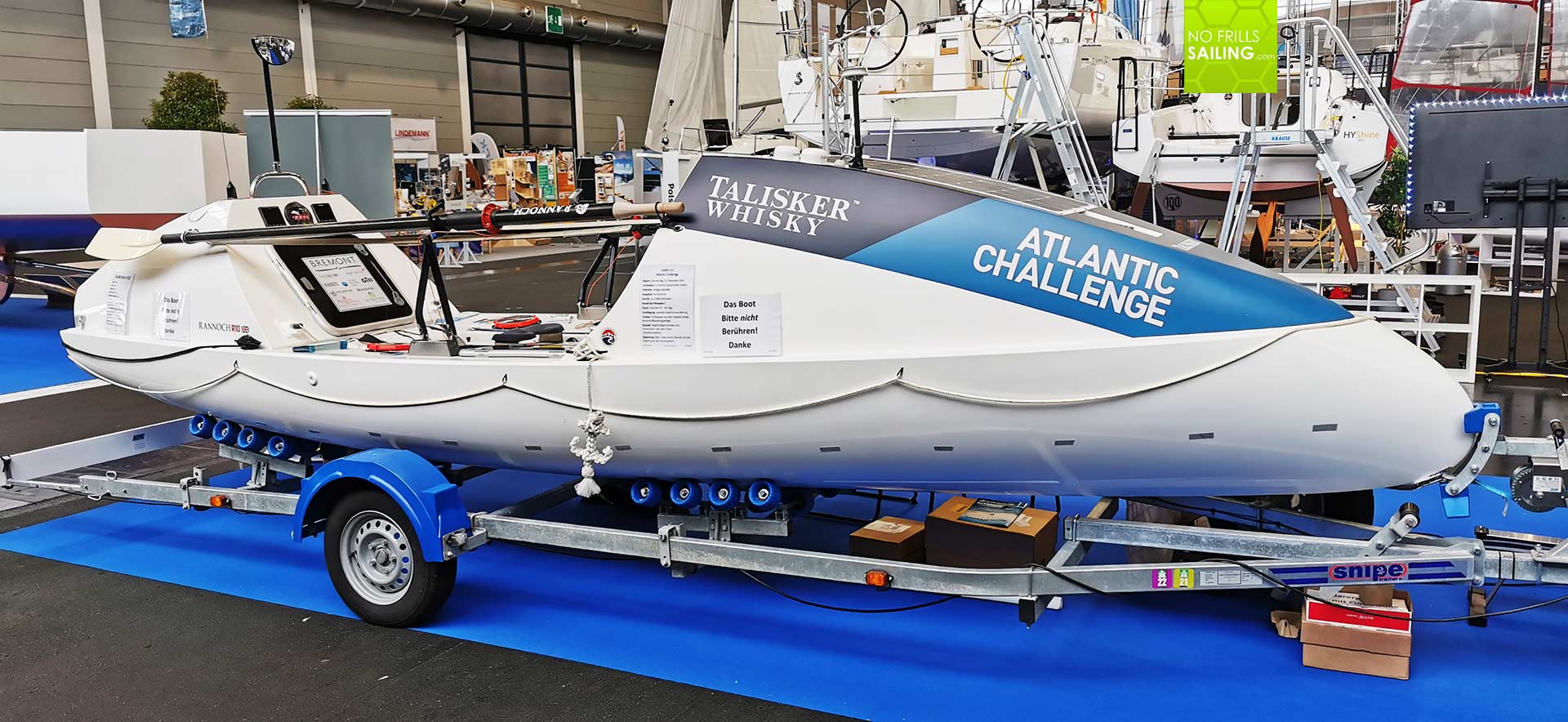
That´s a single 10 foot boat, futuristic design, no mast, no sails, no screw: A Rannoch R10 rowing boat. The boat is on display for fundraising on behalf of Martin Stengele, a German sports teacher and mental coach who recently bought the boat and set himself on the journey of his lifetime. The Tallisker Whisky Atlantic Challenge 2024 is his aim. I took some time to take pictures of the interesting vessel and speak to Martin about his campaign.
Martin Stengele´s adventure of a lifetime
If Martin succeeds and arrives in Antigua in the Caribbean he will have tackled some 3.000 nautical miles in his rowing boat. He will be one of the few who actually mastered the challenge that was founded in 1997 and is named after the sponsor of the nice Whisky brand since 2015. Martin says that he is doing it for testing his own strategies and approaches which he is teaching as a coach: Seeing he can take it, mentally and physically, as a proof for his business.
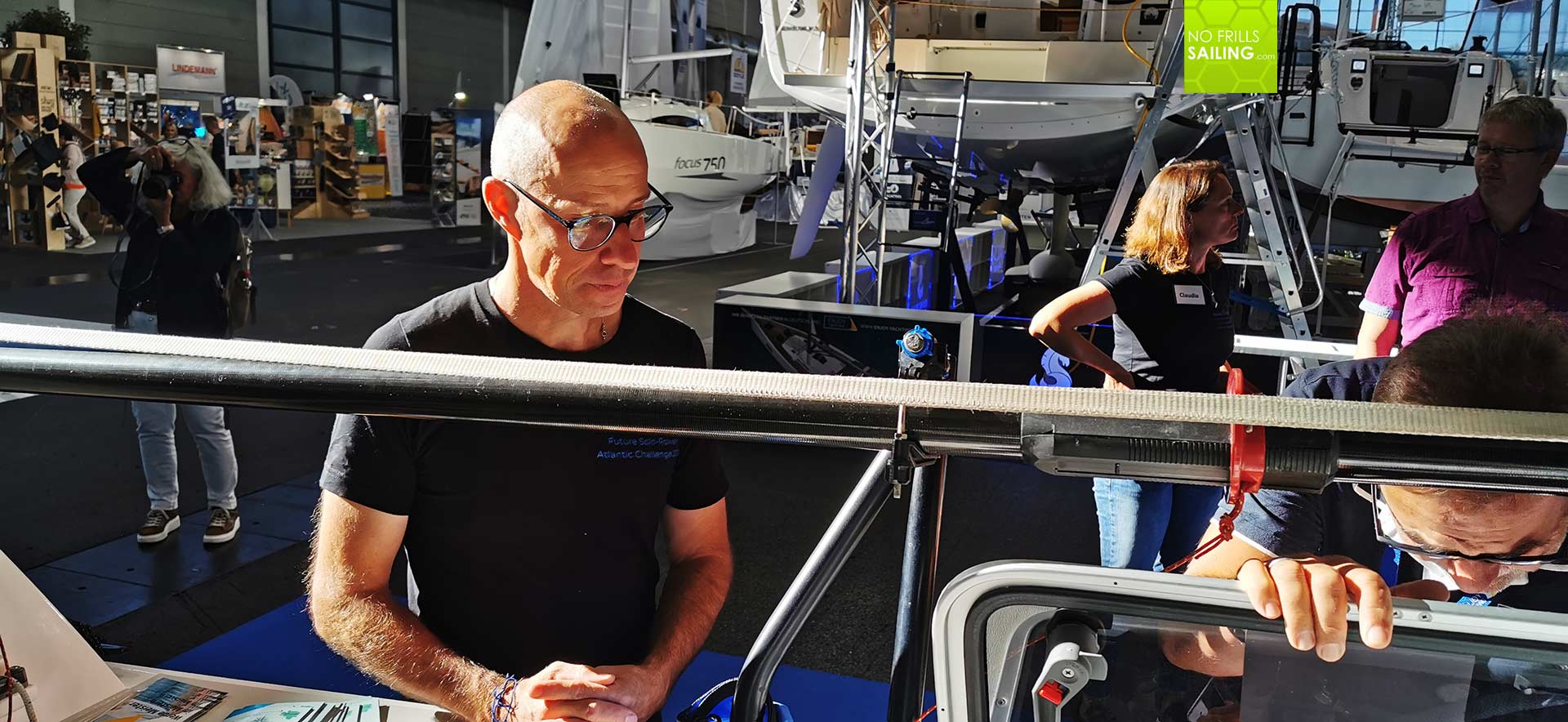
The sports teacher trains both physically and mentally: First sea trials with his boat took place near his home town of Stuttgart in the river Neckar, another one in the Lake Constance. For sure, that is no comparison of what awaits him in the mighty Atlantic Ocean: Strong currents, waves of 7 to 10 meters are normal, possible bad weather and severe storms. Also, strong downpour and long periods of merciless sunshine or steaming hot temperatures. He is starting solo – double and four-crew-boats are also allowed.
Row, row, row your boat …
In this, the set of requirements for an entry tot he challenge are high, safety standards as well. The boats are a one design class built by Rannoch, a small yard specialized in ocean rowing boats in the United Kingdom. These boats can be made from GRP or carbon, price starts at some 65.000 Euros, fully equipped a boat could scratch the 100 k mark. Martin went for a used GRP boat. Still, he says, 90.000 Euros including trailer and all equipment is a hefty number.
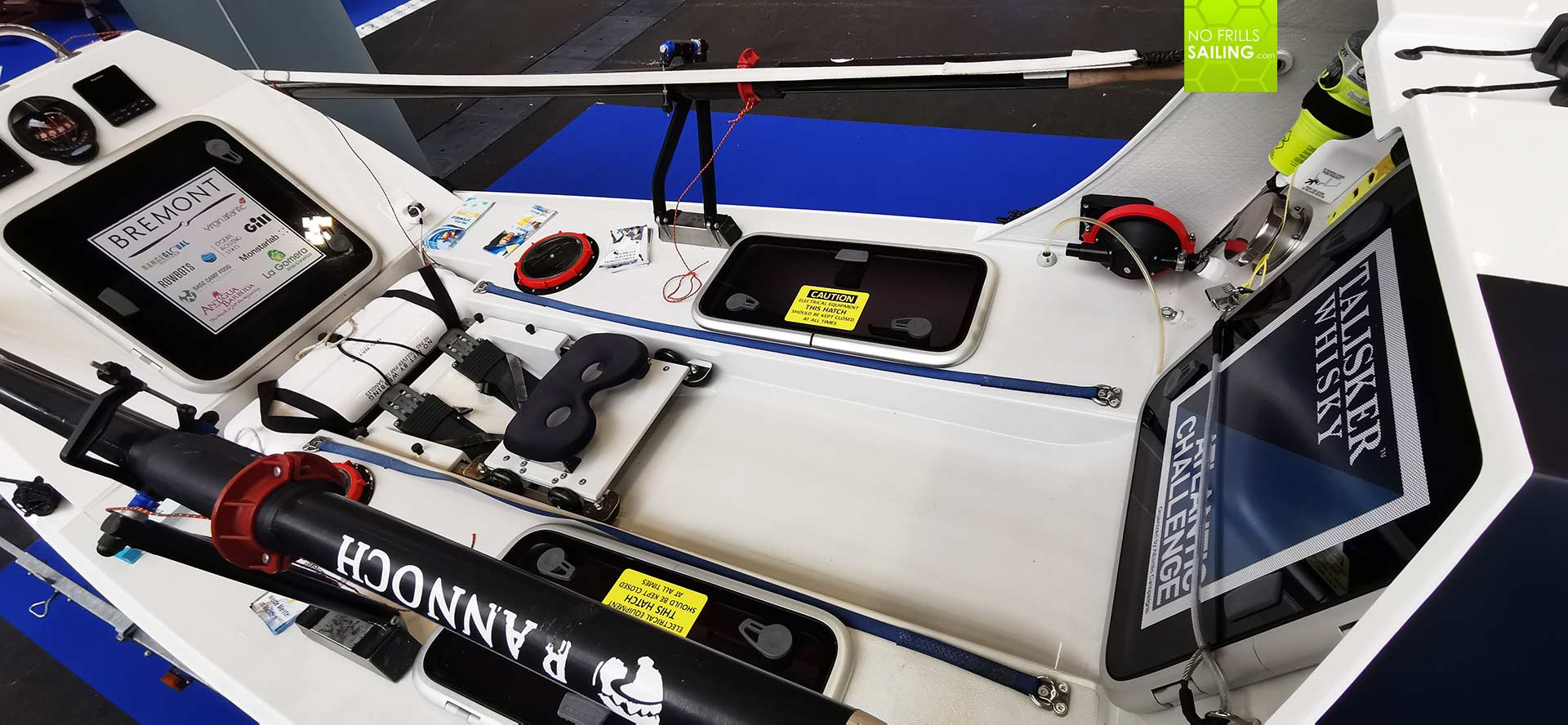
Nevertheless, these boats are made to cross the vast distances of an Ocean. Hydrodynamically shaped and built to withstand the forces which could be exerted not the structure. On the other hand, the boats must be as light as possible to minimize power needed to push them forward. The R10 boat will weigh some 850 kilograms when fully loaded, nearly a ton to be moved from the Canary Islands to the Caribbean.
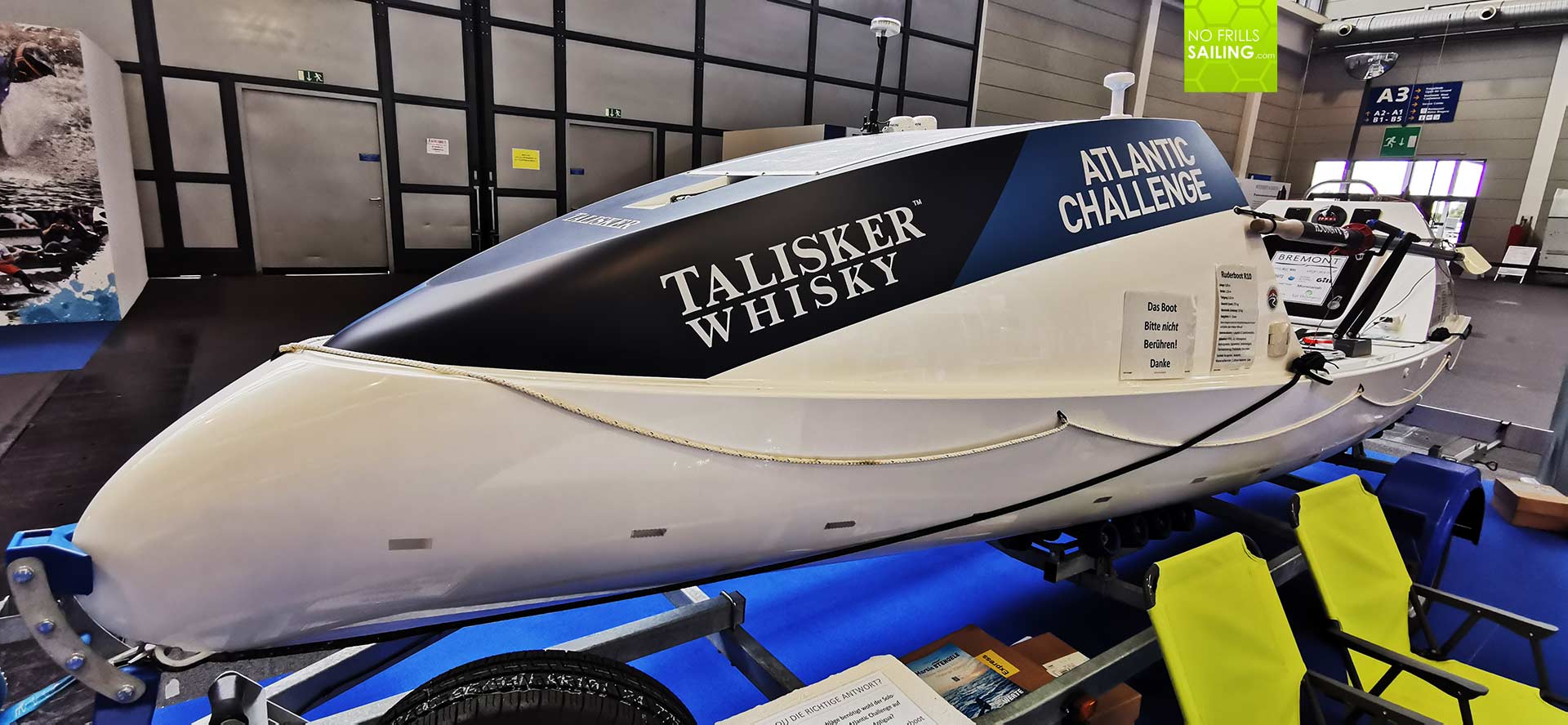
These boats are the pinnacle of a two decade long development and constant improvement of ocean rowing boats. The first boats started as DIY kits to be built by the participants themselves, nowadays a Rannoch is ordered and delivered just like a sailboat or yacht. It is a small market though, but a very exciting one as I learned talking to Martin.
1.5 Million rowing strokes
The crossing of the Atlantic Ocean with a rowing boat is a huge adventure, let alone doing this solo. The estimated 3.000 nautical miles from the starting point, which in 2024 will be the wonderful island of La Gomera, are tackled in December. That´s of course the best season to take on the crossing as prevailing winds and currents are much of a help, but still, 1.5 million strokes are to be done and even in December the Atlantic Ocean can be a wild and unpredictable place. Even under the best external circumstances the time window Martin is calculating with is huge: 50 days at best, 80 days when things get rough, that´s his estimate. The organizer demand all boats being equipped with food for 90 days.
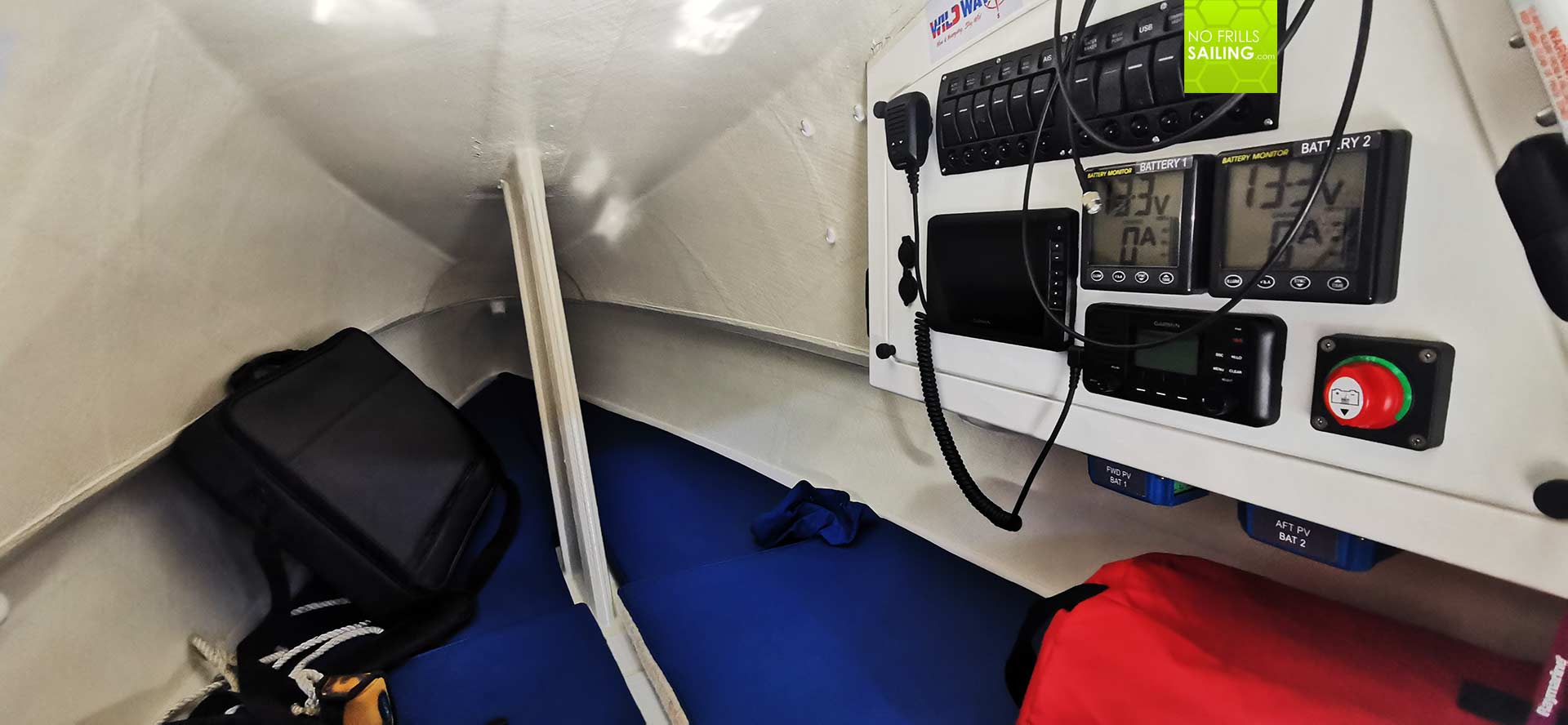
But how will a normal day aboard the R10 be like? Martin says he has talked to some finishers already and there are many ways to do it: Rowing in 2-hour sessions with frequent pauses is one approach. But he says, he thinks he is going to do it the “natural” way, not interfering with the day-night-rhythm of his body. In this, after a normal good night´s sleep in the R10 cabin, he will row a full day, just to be adrift, pulled by an anchor during the night.
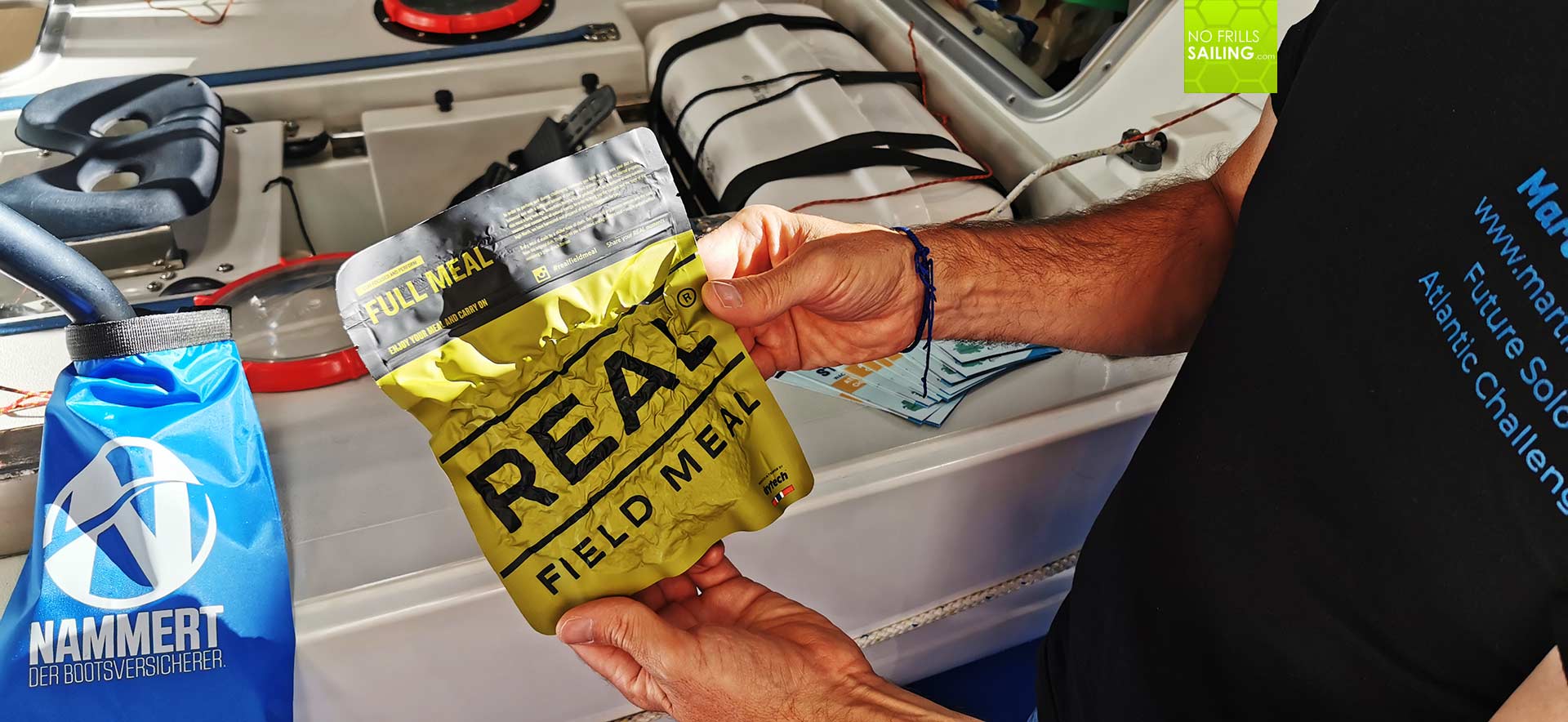
Replenishing calories is a big thing. I know this from my past as a bike racer. We calculated thoroughly and it was a constant struggle to put back into the metabolic system what we had been taking out conquering the Alps. Well, I can imagine how important it is to do a good calculation for a venture like crossing the Atlantic. Here won´t be any Alp Inns offering food and drinks, no fresh water taps along the road. It is estimated that a daily feed of 3.000 kcals must be taken in. That´s a lot of food, actually.
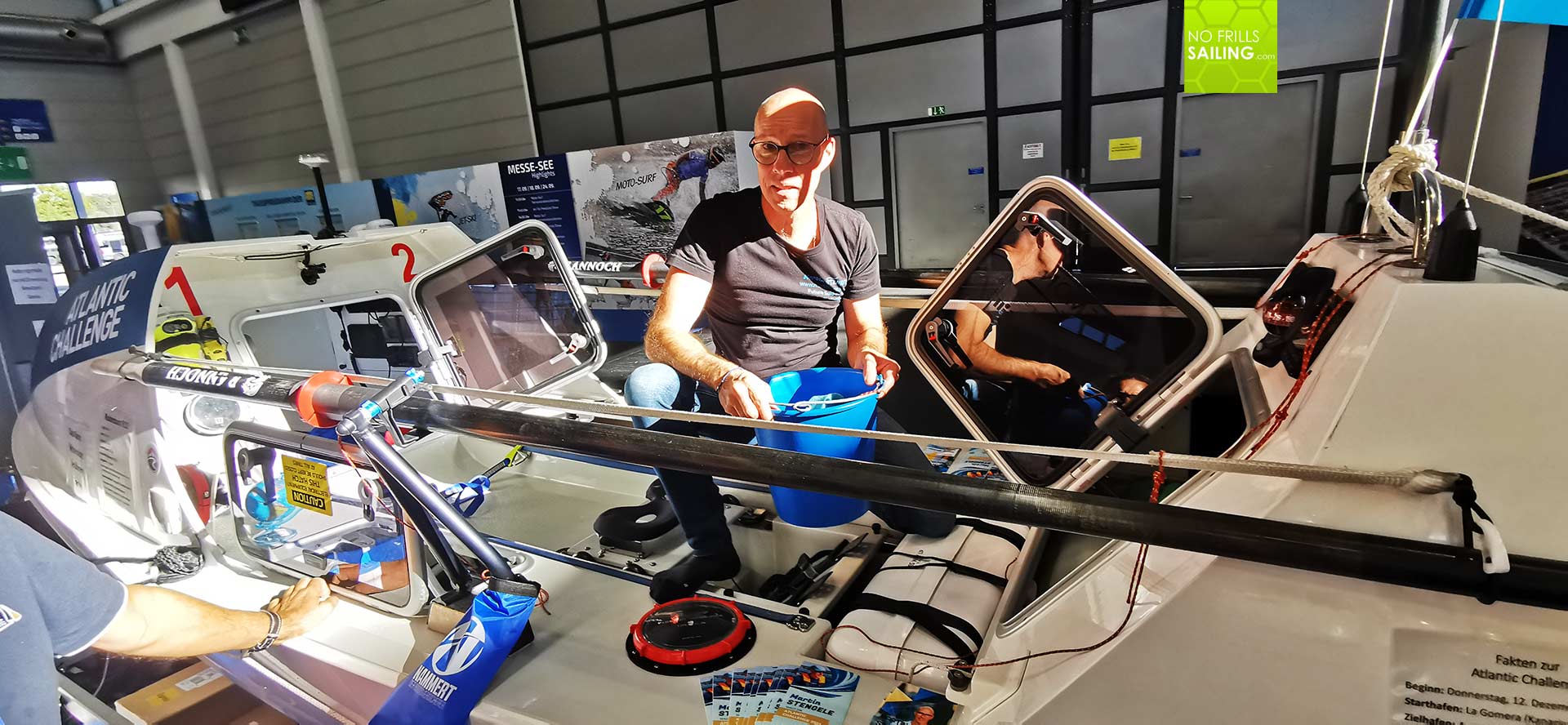
Martin is going to rely solely on freeze-dried food. Upon talking about food and nutrition, immediately another thought hits my mind: Where to take a dump and how to do it in the midst of a big Atlantic swell? Well, good old comrade Mr. Bucket will do, Martin says. Speaking about all this, personal hygiene will be at a minimum, but not completely gone: The boat is equipped with two lithium batteries connected to a small solar array. Powering navigational instruments, an autopilot and – of course – a water maker.
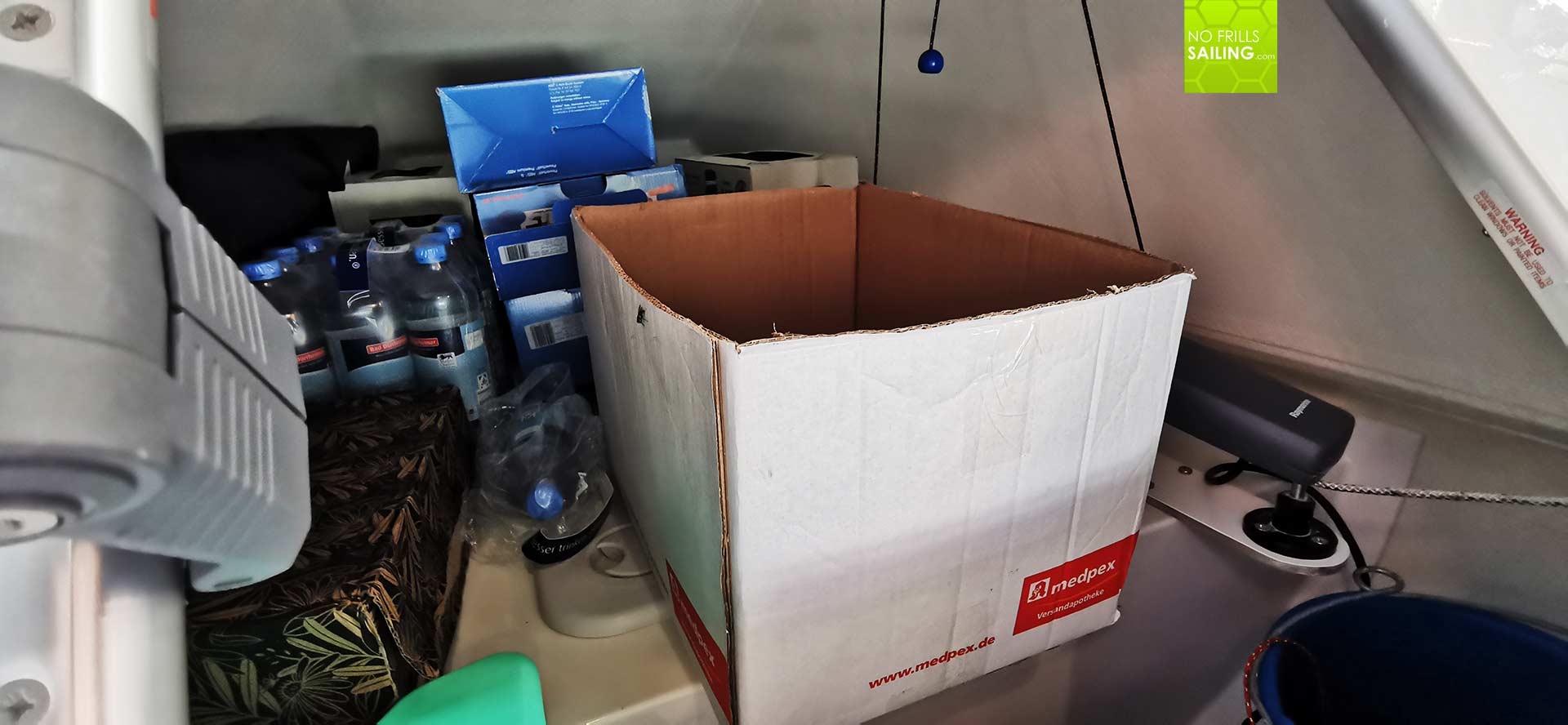
The R10 offers decent stowage as well. Right in the back of the boat a large cabin-like closet is situated where Martin can put food rations, fresh water and gear. He tries not to take more than needed with him: Every kilogram of extra weight will prolong his muscle work. Imagining sitting on the rowing seat for 8, 9 or 10 hours consecutively and drifting at night, being the subject of currents and waves … something very special.
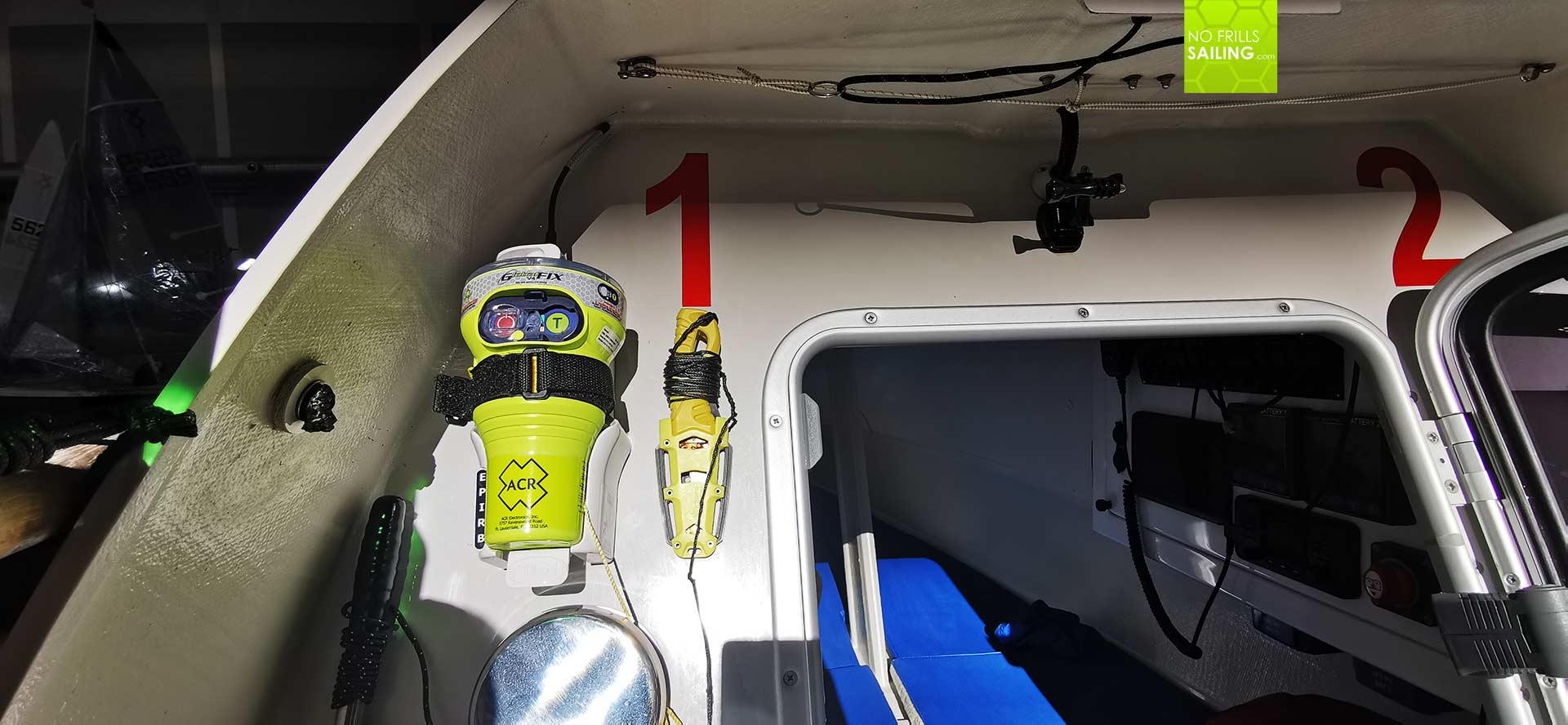
In case of emergency the R10 is equipped with a set of safeguards: An automatic life raft is part of the safety equipment as well as an Epirb and a Personal-Epirb that is permanently connected with Martin´s body. The boat has also a minimum equipment of position lights and of course active AIS transmission. A of now I am not aware of any major incidents surrounding the Tallisker Challenge.
All the best, Martin!
So, every day I am on duty during the boat show, I keep an eye on the small stand of Martin. Many interested people gather around his futuristic boat, ask questions and listen to his stories. A small piggy bank asks for donations: With a boat price of hefty 90.000 Euros and an estimated overall cost of some 150.000 Euro there is still a long way to go in terms of fundraising.
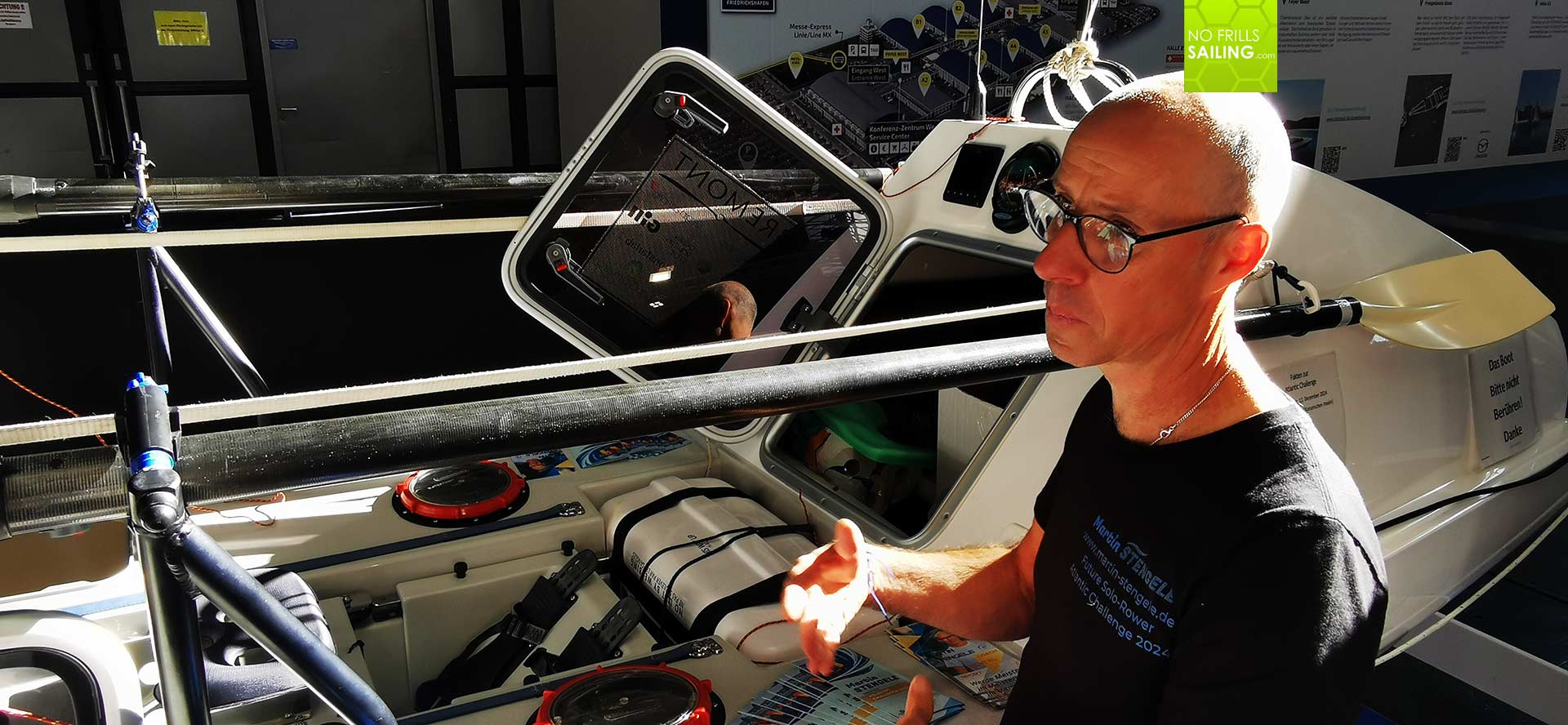
I know from personal experience how big of a step it is to decide to cross the Atlantic Ocean. Although so many people do it each year, like climbing the Mount Everest, it still remains what it is: A vast, mighty, at times brutal Ocean that can kill you at an instant. Crossing it by boat is the fulfilling of a live long dream for so many people, crossing it with the power of one´s own body must be a profoundly live-changing experience. I wish Martin all the best – and I hop, I can write a follow-up article in spring ´24 about his 1.5 million stroke-journey of a lifetime.
You might as well be interested in these articles:
Planning my own Atlantic Loop
Why I postponed my own Atlantic Challenge
